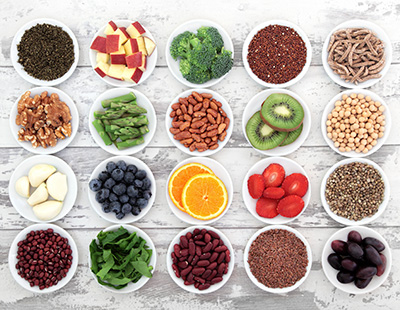 May 14, 2015
May 14, 2015
 Essential Oils, Healthy Living, Nutrition
Essential Oils, Healthy Living, Nutrition  Leave a comment
Leave a comment  essential oils, healthy living, nutrition, wellness
essential oils, healthy living, nutrition, wellness Many of the Essential Oils available on the market today are extracted from plants that often double as spices or flavoring agents. This leads many to wonder if they can cook with their Essential Oils and the answer is yes! Food grade Essential Oils can be used to flavor candies, baked goods, soups, and other savory dishes.
Many of the Essential Oils available on the market today are extracted from plants that often double as spices or flavoring agents. This leads many to wonder if they can cook with their Essential Oils and the answer is yes! Food grade Essential Oils can be used to flavor candies, baked goods, soups, and other savory dishes.
However, because these oils are incredibly potent you will need to use a great deal less than you would with regular spices. For example, herbal based oils such as basil and thyme have a ratio of one drop of oil for every teaspoon of loose spice.
When using citrus based oils such as lemon, lime, or grapefruit in place of a peel or zest, the flavor is a little more forgiving and you need not fear overpowering your dish. In your given recipe, replace one tablespoon of zest with 1/8 of a teaspoon of your corresponding oil.
You can even use Essential Oils for baking as a replacement for alcohol based extracts (i.e. using peppermint oil instead of peppermint extract). Essential oils are significantly stronger than these extracts; a good place to start would be using ¼ of a teaspoon of oil for every whole teaspoon your recipe calls for. If you are using the oils to flavor chocolate, you will want to be very careful with measuring your Essential Oils. Aim for ¼ to ½ of a teaspoon per pound of chocolate to avoid overpowering the candies. Below are more tips for how to cook with essential oils.
What Essential Oils Can I Use for Cooking?
When using Essential Oils for cooking, you want to be sure to procure only the best quality oils with no synthetic or filler substances. Not only would this likely impact flavor, you are also less likely to reap any benefits from inferior grade oils. It also defeats the purpose of using oils for natural, healthy cooking.
That being said, there are a plethora of food grade Essential Oils that can be incorporated into your recipes. The following are just a few examples of various oils and the ways you can cook with them.
- Citrus Oils
- Grapefruit
- Lemon
- Lime
- Orange
- Tangerine
- Oils for Baking and Candy Making
- Clove
- Lavender
- Nutmeg
- Peppermint
- Spearmint
- Wintergreen
- Oils for Savory Dishes
- Ginger
- Marjoram
- Oregano
- Rosemary
- Thyme
Why Use Essential Oils for Cooking
Of course, many individuals may be wondering why they should even bother with Essential Oils in the kitchen when they have perfectly good spices already. There are three factors that play into using Essential Oils over traditional spices: ease of use, cost, and shelf life.
If you want to make a dish that calls for lemon zest, odds are you will need to make a special trip to the grocery store to buy a lemon. Not only that, but you are not likely to use the rest of the lemon and may end up throwing away the entire fruit after using its peel.
This correlates directly to cost. You save money by using essential oils as you need quite a bit less of the oil than the corresponding spice for any given recipe. Plus, essential oils have a significantly longer shelf life than spices and do not lose their potency over time as spices do. So while you will continually need to add more and more spice to achieve your flavoring goals over time, you will always need just one drop of your Essential Oil.
If you are looking for ideas on how to incorporate Essential Oils into your cooking or looking for readymade recipes so you do not need to do the spice-to-oil conversion yourself, there are plenty of recipes available all across the web. A simple Google search will yield a great number of ideas for you to get started.
If you’d like to learn more about Essential Oils and how they can help you and your family stay healthy, please contact me today!.


